
Loddon is a small market town and electoral ward about 12 miles (19 km) southeast of Norwich on the River Chet, a tributary of the River Yare within The Broads in Norfolk, England. The name "Loddon" is thought to mean muddy river in Celtic in reference to the Chet.

Blickling Hall is a stately home which is part of the Blickling estate. It is located in the village of Blickling north of Aylsham in Norfolk, England and has been in the care of the National Trust since 1940.
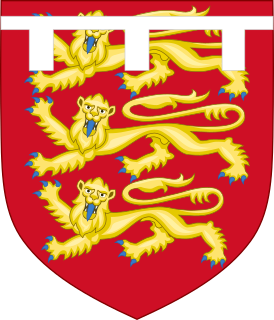
Thomas of Brotherton, 1st Earl of Norfolk, was the fifth son of King Edward I of England (1272–1307), and the eldest child by his second wife, Margaret of France, the daughter of King Philip III of France. He was, therefore, a younger half-brother of King Edward II (1307–1327) and a full brother of Edmund of Woodstock, 1st Earl of Kent. He occupied the office of Earl Marshal of England.

Langley Hall is a red-brick building in the Palladian style, formerly a country house but now a private school, located near Loddon, Norfolk, England. It is a grade I listed building.
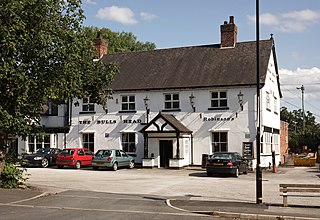
Hale Barns is a village near Altrincham in the borough of Trafford, Greater Manchester, England. Hale Barns lies about 7 miles (11 km) south-west of Manchester city centre, 2 miles west of Manchester Airport and close to the River Bollin. At the 2011 census, the village had a population of 9,736.
Spurrell is a surname found in Norfolk, Wales and other parts of the United Kingdom, as well as in various countries around the world.

Dunham Massey is a civil parish in the Metropolitan Borough of Trafford, Greater Manchester, England. The parish includes the villages of Sinderland Green, Dunham Woodhouses and Dunham Town, along with Dunham Massey Hall and Park, formerly the home of the last Earl of Stamford and owned by the National Trust since 1976. Dunham Massey is in the historic county of Cheshire, but since 1974 has been part of Trafford Metropolitan Borough; the nearest town is Altrincham. At the 2001 census, the parish had a population of 475.

Hales is a small village in Norfolk, England. It covers an area of 3.99 km2 (1.54 sq mi) and had a population of 479 in 192 households as of the 2001 census, which had reduced to 469 at the 2011 census.

Hevingham is a village and civil parish in the Broadland district of the English county of Norfolk. Situated between the A140 road Norwich to Cromer road and the B1149 road Norwich to Holt road. It is 7 miles (11 km) north from the city of Norwich and 4 miles (6.4 km) south from the market town of Aylsham.

Bramerton is a village in South Norfolk 4¾ miles south-east of Norwich, just north of the main A146 Norwich-Lowestoft road and on the south bank of the River Yare. In the 2001 census it contained 158 households and a population of 350, the population falling to 301 at the 2011 census.

Claxton is a small village 8.5 miles (13.7 km) south-east of Norwich, and south of the River Yare, between Rockland St. Mary and Loddon in South Norfolk, England. In the 2001 census it contained 85 households and a population of 244, the population increasing to 291 at the 2011 census. Just to the south lie the small villages of Ashby St Mary and Carleton St Peter.
Sir John Hobart, 2nd Baronet was an English politician and baronet.
Little Hautbois is a small hamlet in Broadland, England, part of the parish of Lamas. The name is pronounced 'Hobbis', and can be seen thus spelled on a memorial on the outside of nearby Lamas Church. The population of the hamlet is included in the civil parish of Buxton with Lamas. In the Middle Ages, the settlement of Great Hautbois was the head of the navigation on the River Bure, and it is thought Little Hautbois developed from that. The name, which can be translated to "High Woods" in English, is taken from that of the de Alto Bosco, or de Haut Bois, family, who acquired these lands at the Norman Conquest (alternatively, they may have taken the name from the settlement, Blomefield being uncertain on this point.

Great Witchingham is a village and civil parish in the English county of Norfolk about 11 miles (18 km) north-west of Norwich.

Paston is a village and civil parish in the English county of Norfolk. The village is 4 miles (6.4 km) north-east of North Walsham and 9.1 miles (14.6 km) south-east of Cromer. It is 19.2 miles (30.9 km) north-east of the city of Norwich. The village sits astride the coast road between Mundesley and Bacton. The nearest railway station is at North Walsham for the Bittern Line which runs between Sheringham, Cromer and Norwich. The nearest airport is Norwich International.
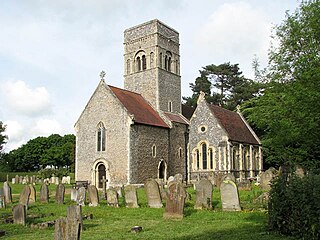
Gillingham is a small village located just off the A146 in South Norfolk, about 1 mile north of the market town of Beccles. The full name of the parish is Gillingham All Saints and St Mary. It covers an area of 8.21 km2 (3.17 sq mi) and had a population of 650 in 294 households at the time of the 2001 census, increasing to 676 at the 2011 census.

Ufford Hall is a Grade II* listed manor house in Fressingfield, Suffolk, England, dating back to the thirteenth century.
The medieval lost town of Newtown Jerpoint is just west of the Cistercian Jerpoint Abbey, near Thomastown, County Kilkenny, Ireland. It is located 3.2 km south west from Thomastown just off the R448 regional road. In the grounds of the privately owned Jerpoint Park. St. Nicholas’s Church and graveyard are in the town, where the earthly remains of St. Nicholas of Myra are said to be buried. Belmore House stands at the top of the town.
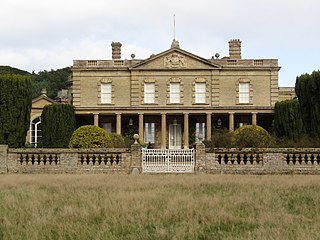
Gunton Hall, Gunton Park, is a large country house near Suffield in Norfolk.
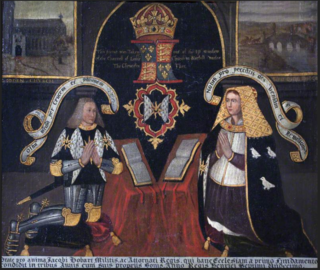
Sir James Hobart, also known as James Hoberd and James Hubbard, of Norfolk became a member of Lincoln's Inn during Edward IV of England's reign and was appointed attorney-general and knighted during the reign of Henry VII.















